By the glass schemes are opening up the world of wine to customers like never before and giving operators so much more scope in terms of the range and choice of wines they can offer, as The Buyer Trading Up Debate, in partnership with Coravin, discovered. Thanks to M Victoria and its team for hosting the debate. All pictures by Thomas Skovsende.
Whether you are a three star Michelin restaurant, or the local Dog & Duck, every on-trade operator is faced with the same challenge and opportunity. How do you give your customers the quality offer they are looking for, but with the right value for money that makes them want to come back? Where wine sits in your operation will be crucial in how you meet both those challenges. It is not only the UK’s favourite style of alcohol when going out for a drink, it can also potentially offer you, the operator, great margins and returns, providing you know what you are doing with your own wine offer.
That was the conundrum up for discussion in The Buyer’s Trading Up Debate, in partnership with Coravin, that looked to hear first hand from leading buyers, sommeliers and on-trade chiefs about how they are managing their wine offer in their outlets – and in particular where do by the glass schemes and other trading up options now sit in the mix.
To help us we invited the following leading players to take part:
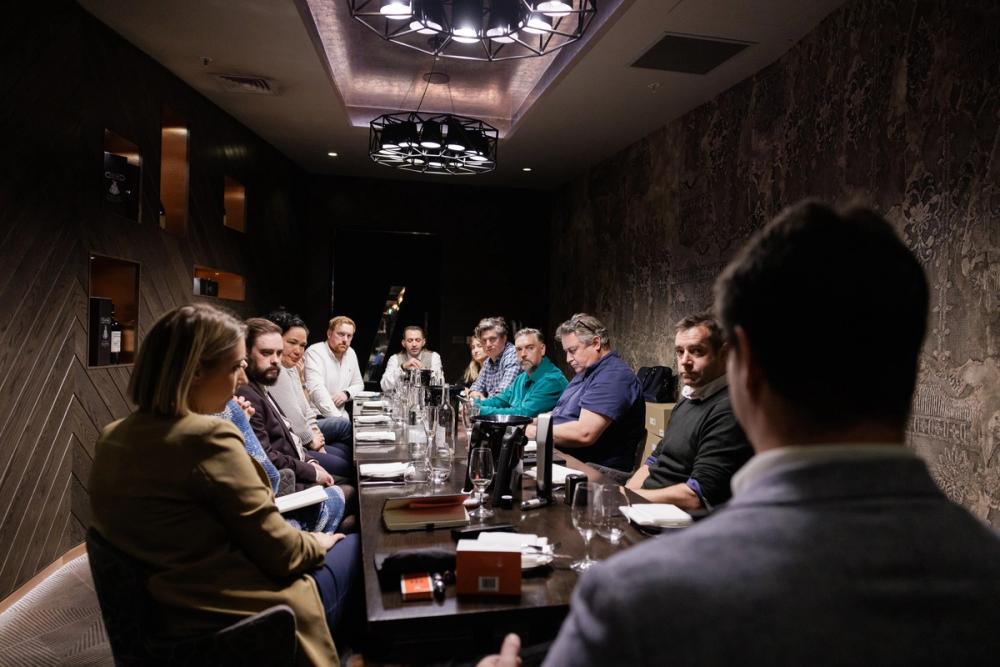
It’s good to talk…Top sommeliers and on-trade operators and suppliers took part in the debate
- Emanuel Pesqueira, head sommelier, Gordon Ramsay Group, 1890 by Gordon Ramsay.
- Gergely Barsi Szabo, wine development manager, Enotria&Coe
- Guillaum Mahaut’s, group wine buyer, the ETM Group.
- Andrew Clark, purchasing manager for wine, Mitchells & Butlers.
- Peter McDonald, chief executive officer, Mosaic Pub & Dining.
- Sam Watson, wine manager, Mosaic Pub & Dining.
- Marina Diaz, head of wine Rare Restaurant Group (M Restaurants and Gaucho).
- Edyta Yanuzik, wine manager, Gaucho Chancery Lane.
- Callum Robertson, on-trade sales executive, Corney & Barrow.
- Katie Warren, director of marketing, Coravin Europe.
- Anne Roque, UK Sales Manager, Coravin
- Arnaud Pasdeloup, sales and project manager, Coravin.
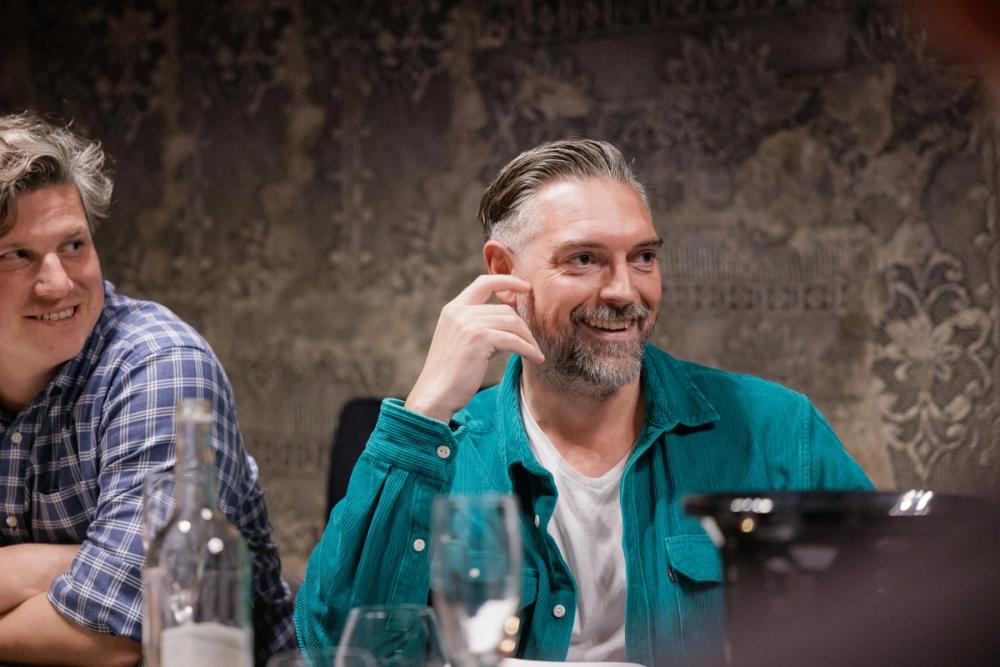
M&B’s Andrew Clark said operators have to do even more to give customers better experiences
Andrew Clark at Mitchells & Butlers, which has around 1,700 outlets in its business, helped set the scene and context for the debate when he said: “This is one of the most challenging years to be a buyer. So trading up is a challenge in any of our trading areas, but where we can, we can add some real value to our customers.”
Gergely Szabo at Enotria&Coe said that whilst he agrees the overall market conditions are tough, and getting tougher with increases in cost of living, there are also still lots of opportunities to trade up in wine in the premium sector.
“Even with all the trading conditions, there is still demand in premium fine dining, that sector is strong and there is demand from customers and their guests. It is up to us to help them give the best possible service to their customers,” he explained.
Corney & Barrow’s Callum Robertson agreed and said there was still “demand for high quality wines” in premium restaurants. “People may be going out less, but when they are, they are pushing the boat out. We are now looking to satisfy that demand by looking for select parcels of wines for top venues and assisting them where we can with their by the glass lists.”
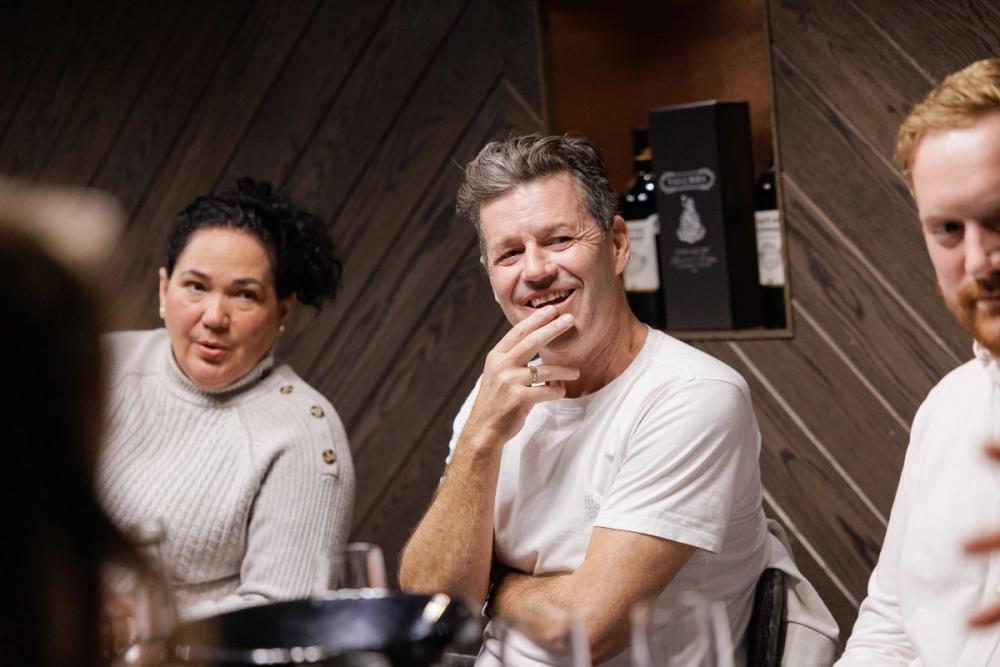
Peter McDonald says Mosaic Pubs will be looking at how it can expand its by the glass offer
Peter McDonald at Mosaic Pub & Dining, that runs around 35 sites in and outside of London, said there is real pressure on operators to “give more back to our customers and to do more to improve our experiences for them”. Which is where wine does have an important role to play, he added.
Guillaum Mahaut said he has been “surprised” by how much people are still willing to trade up on wine and are prepared to spend money across the ETM Group, but they are also very aware of the prices they are paying and want to buy wines they know are at the right price. “You cannot afford to be too aggressive. You will frighten people away. You have to have a different perspective now in how you develop your wine list.”
By the glass options

The Buyer’s Richard Siddle guided the debate
Wines by the glass have fast become the go to option for restaurants and bars looking to trade up customers and offer more choice.
Marina Diaz at Rare Restaurant group, that includes Gaucho and M Restaurants, says around 20% of its list is available by the glass and in a “perfect” world she would have her all her wines by the glass, but “cost wise that is not possible”.
Gaucho’s Edyta Yanuzik says customers will often come in and scan the list and then ask for the wines they can have by the glass. “There is a lot of demand for it and people know what they are looking for,” she said.
McDonald said serving wines by the glass “does allow you to try and push the price point a bit more and look more at cash margin rather than GP”.
Mosaic has a wide range of different types of pubs across its estate so has to find the right by the glass approach for each one. “We have different menus for different places and change the list at different times of the year as well. So it depends on the venue. Some people are more interested than others at looking for interesting wines.”
What does not change, though, is looking to sell wines by the glass at 175ml rather than 250ml. “They are more likely to have a second glass then. I hate 250ml.”

ETM Group’s Guillaum Mahaut says it uses Coravin for wines above £100
Mahaut says the ETM Group are also looking to phase out 250ml in favour of 175ml as the ideal serve.
Clark has an even more diverse range of venues to handle across its 1,700 plus sites and he works with a category manager in order to pick trends, and identify gaps in their range.
“It’s a big ship to steer. We visit different city centres to to see what is going on and what we can be doing better. Premiumisation, though, over the last two years has been a real focus. But you have to be careful. You have got to find the right wines by the glass that are going to work with the customers in that venue.”
Even at the high end you need to manage your by the glass options carefully, said Emanuel Pesqueira at Gordon Ramsay Group. He has at any given time at least 100 wines available by the glass. It means he is constantly on the look out for new wines to list and works with up to 18 suppliers to do so.
“I do a lot of the work myself, and I am very picky. It took me six months to find the right orange wine for the list.”
He has, though, really noticed a different amongst its customers post Covid: “People are much more educated about wine, they know the difference between Pinot Grigio and Soave and are much more open to trying new things and you have to work harder to have different types of grapes and varieties on your list.”
That’s where tasting menus can also come into play, particularly for those that really want to experiment with different wine styles, he added.
Role of Coravin
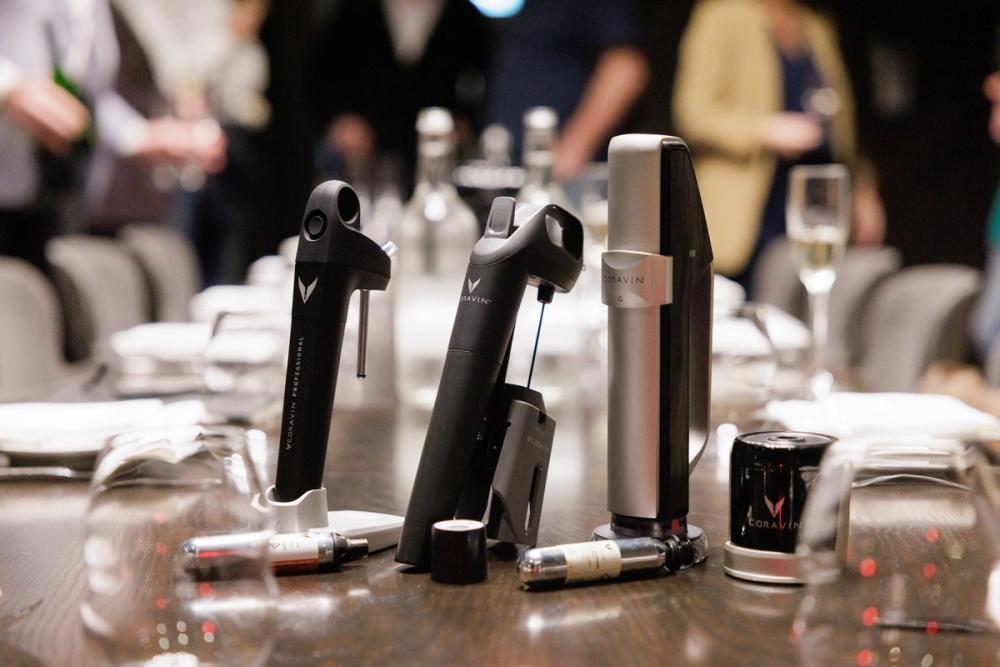
The panel had the chance to taste wines that had been under Coravin and not see if they could see the difference
Which brings us to the role of new dispensing machines, pioneered by Coravin, that have totally transformed the way restaurants, operators and sommeliers on the floor can now offer a whole new wine experience for their customers.
“It has been interesting to see how much impact it has had,” said Diaz, who has since the debate taken on Coravin to see how it works in Gaucho and M. “I am really happy with the Coravin Pivot. It is ideal to use with regular wines by the glass. We will be using it in both Gaucho and M.”

Marina Diaz said she has been impressed with how well Coravin has worked with initial trials a M and Gaucho
She added: “Coravin absolutely helps you put more wines on the list and helps give customers more premium wines by the glass.”
Pesqueira said having Coravin has totally transformed the way he is able to source wines and offer them to his customers.
“It’s been a complete game changer. A revolution. But you have to believe in it. You can open up any bottle in your cellar and offer it by the glass. Even if it costs £450 per glass from a £2000 bottle of wine. We have First Growths by the glass. But you then have to know how to work that bottle and use it with pairing menus to make sure it is used up. It is exhausting because your GP is on the line, but without Coravin it is impossible.”
He added: “It has changed the way we see the world as sommeliers. Without it we would not be able to do what we do. I have red wines that have been under Coravin for two years. We have 12 Champagnes by the glass in the restaurant. We even have a Madeira going back to 1890 that we offer a glass under Coravin. I use Coravin professionally and personally. We have five Coravin in the 1890 restaurant and it has transformed what we can do.” For example, it can now offer double Magnums with Coravin, which gives guests an amazing experience without having to pay for the full double magnum.
“You have to have a good strategy and make sure you are on top of your wastage and know exactly when every bottle has been used for Coravin. It is very intensive and you have to be ready all the time to change and adapt.”
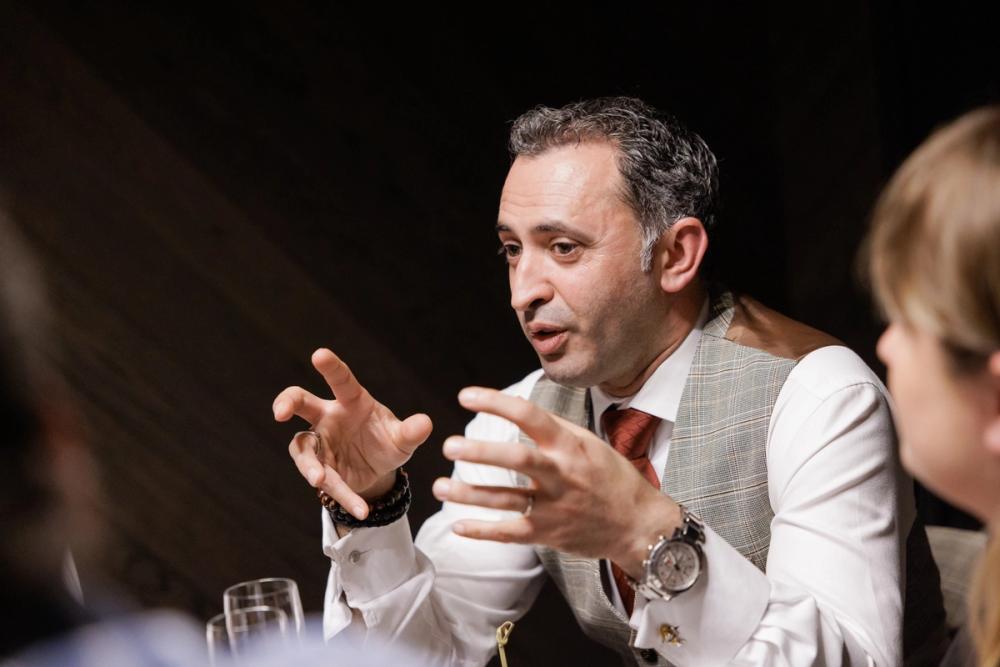
Emanuel Pesqueira says Coravin has been a complete “game changer” for sommeliers and fine dining
Staff training is essential, he added: “You have to give your team the confidence to use them, to take ownership of them. Let them choose which wines they are going to do with Coravin. That is the key. You have to let them make their own mistakes and learn from it. If they break a glass then so be it. We started doing 20 by the glass with Coravin, then 40, and now we do over a 100.”
Learn and apply
Coravin’s Katie Warren said a key reason why they wanted to work with The Buyer on this debate was it was vital for them to hear first hand what buyers and sommeliers on the floor are experiencing and thinking. “We want to learn what your needs and requirements are and how we can best help and assist the trade,” she said.
Anne Roque said that she is able to see first hand with Coravin’s business customers what impact it can have, but also appreciates some of the changes it requires, particularly around staff training and the time involved there.
The key, she said, is to have the right Coravin device to match the needs of a particular venue, or operator. “We have a reputation for only being in fine dining venues, but we have a number of devices that can help and support the trade across lots of different venues.”
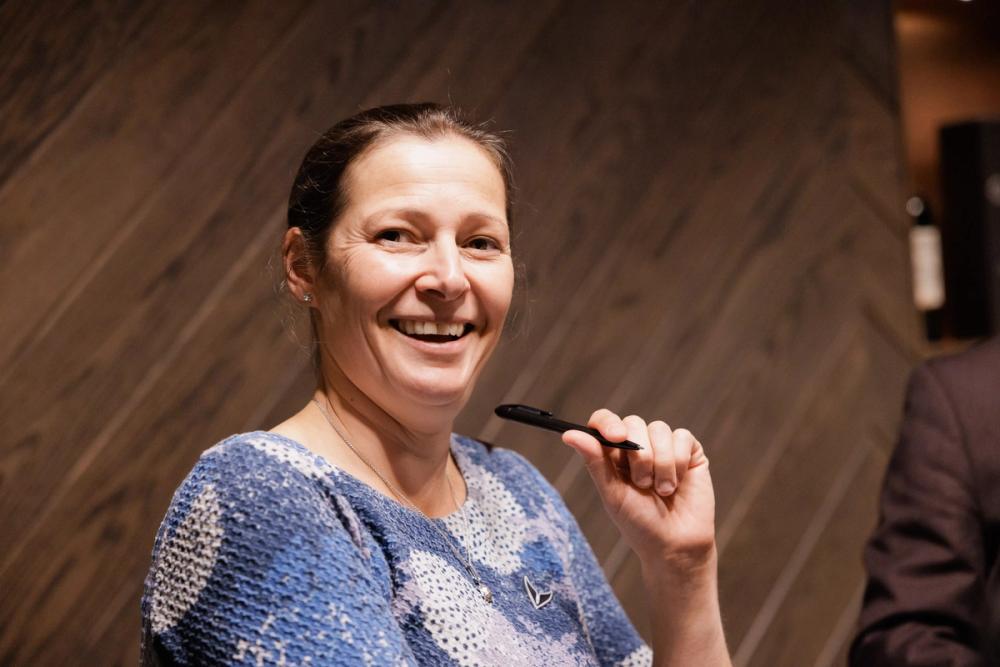
Coravin’s Katie Warren said it was vital its team listened constantly to its customers to find out how it can improve its offer and create even more effective devices
Arnaud Pasdeloup has switched careers from being head sommelier, working amongst others at Chez Bruce and Caprice Holdings, to seeing how he can help Coravin gain access to more venues. He has certainly learnt the hard way by managing the Coravin pop-up wine bar in London where he and his team were dealing with 100s of customers a day and going through needle after needle serving 350 wines and 50 Champagnes by the glass.
“It was a great way to really see how the technology works and get feedback direct from consumers. In the seven months we ran the bar we got a huge amount of information we are now able to work with our engineers to create even more effective and relevant devices,” he said.
Trading up
Mahaut says he uses Coravin at some of the ETM sites, particularly the Jugged Hare in the Barbican where there is a big focus on wine and it was particularly useful in running flights of wine from different regions or grape varieties and for food pairing. “Anything above £90 we put under Coravin.”
He added: “A wine flight is a great way to get people to pay a bit more and then they might come back and buy a glass and a bottle of one of the wines in the flight. It also allows you to change the theme every month.”
Szabo says the wine development team at Enotria&Coe use Coravin as part of the support and training they look to offer their customers.

Gergely Szabo said Coravin was a vital part in how Enotria&Coe works with its premium on-trade customers
“It is crucial that as well as selling wine we are also sharing our knowhow and can offer advice. If we are just dropping off a product and then leaving then we will be out of business very quickly. We use Coravin as part of our support package. We can look at a customer’s list and suggest 15 to 20 wines where they could use Coravin to increase their wine sales,” he explained. “It’s also a great way to introduce and show wines from small producers.”
Coravin can also be a good tool to convince a customer to list more premium wines and push them over the £100 barrier and give them the confidence that they will sell and be profitable, he added.
Mahaut says it is very useful to use Coravin when discussing potential new wines to take on as you can quickly taste and see what might work.
Pesqueira agrees and says it can really help build a relationship with a supplier as you can taste and learn from each other and get a “mutual understanding” of what each other is looking for.
Robertson said Coravin has allowed Corney & Barrow to offer more select parcels of wines to customers and the new Coravin Sparkling system has opened the door to introduce more exclusive Champagnes.
“It also means pub groups can sell decent wine and offer top wines by the glass. We encourage customers to trial Coravin and try it on a small amount of wine and they can learn for themselves as well. Once they have the confidence to use the system then the wines will fly out and they can list more premium wines,” he said. “Coravin has enabled us to do that.”
Part of the show

Coravin’s Anne Roque shows how the new Coravin Sparkling device works
“Coravin is also part of the show,” stressed Pesqueira. “You have to show the guests what you are doing. It is all part of the experience. We will take the Coravin to the table and explain the whole process. People then have a real association to the wine and it makes them feel a bit more special about the glass that they have been poured.”
He added: “If we bring cocktails to the table with the shaker and the whole theatre behind it, then every other table wants a cocktail too.
“At one table we can have four wines with two sommeliers all pouring them by Coravin. It’s an experience. People come and look forward to it.”
“When I was a sommelier that was my approach too,” said Szabo. “When I first started using Coravin I was very sceptical, but as soon as I did wines that had been sitting on the shelf were suddenly moving like the speed of light. But we made sure we gave each customer a proper presentation of what the Coravin was doing. It is good to hear that 10 years later you are still doing that and going to the table.”

Emanuel Pesqueira says it is vital you train your staff to work with Coravin and give them the confidence to use it
“It also helps break the ice when you arrive with all your needles,” added Pesqueira. “It can be part of a customer’s education and journey into wine.”
Diaz is not so sure you need to make Coravin centre stage on the restaurant floor. She said she would prefer to talk about the wine but will put a “C” on the list to let customers know a wine is available by Coravin.
Roque said it really depends on the venue and one of the big learnings to come out of running the Coravin wine bar was that you have to adapt, and it has to work logistically. “But that’s our job. To find what’s right for their business, support our customers and make sure it is a success.”
Mitchells & Butler now has a small number of pubs using Coravin – like the Windsor Castle in Notting Hill and The Engineer in Primrose HiIl in London – and Clark said he was certainly open to trying it in more venues, but needed to be sure which sites were able to work through the right number of bottles to make it efficient.
Put to the test

Coravin’s Arnaud Pasdeloup prepares the glasses for the blind tasting to see if the panel could tell which wines had been under Coravin.
The panel was then invited to test and trial different Coravin devices, including the new Pivot and Sparkling devices, and taste wines that had been under Coravin for different periods of time. It proved a fascinating exercise as they were asked to taste a selection of red and white wines and try and determine which wines had been under Coravin or not.
The results were very mixed with little consensus across the group about which wine had been “Coravined” or not.
When asked to taste three glasses of the same Champagne, for example, a number of buyers went for the first glass as being under Coravin, when in fact it had been freshly poured. The Coravin Sparkling device uses a specially designed Sparkling Stopper to keep the wine perfectly preserved in the bottle for up to four weeks and can be stored upright or resting horizontally in the fridge.
The buyers had the chance to try out the new Coravin Pivot device that has been designed to work with all closures and also offers four weeks of preservation and is aimed at busy bars and pubs. Rather than use a needle through a cork, the screwcap is replaced with a Pivot stopper through which a tube is used to dispense the wine far quicker than a needle.
It claims to keep bottles fresh for up to four weeks and comes with argon gas capsules that can serve on average 30 125ml glasses at a cost of £0.21 per glass.
McDonald was particularly keen to try out the different devices as he wants to see which ones would work in more of his venues. Mosaic is currently using Coravin at The Garrison in Bermondsey but he can see why it makes “perfect sense” to use in a lot more venues.
Looking ahead

The panel was a good opportunity for key trade figures to share their experiences on the restaurant floor
The panel was also asked to assess what is likely to happen in the months ahead and what might happen to premium wine sales as and when the cost of living crisis really takes hold over the winter.
Szabo remains pretty confident and believes the problems in the supply chain over the last 18 months has “created a vacuum for premium wine” in the on-trade as suppliers and restaurants alike have been forced to turn to their cellars to make up for shortages of wines due to the huge backlog in getting wines into the UK from around the world.
“There are a lot of empty cellars that we can be putting our wines into,” he said. “People have also educated themselves in premium wine and are interested in trying new regions, countries and varieties. Coravin can be a good way to introduce them. You may not want to risk buying a bottle of Assyrtiko but you would be happy to have it by the glass.”

Corney & Barrow’s Callum Robertson said the big issue in fine wine is having enough wine to sell
Robertson agreed and said, if anything, he “was worried about having enough premium wine to sell – particularly Burgundy”.
Pesquiera said he has been busy preparing for Christmas and making room on his list for “the classics”. He strongly believes there will be a return to tradition and what people are comfortable with this festive period.
McDonald expects to see more demand for rosé by the glass and a wider selection to choose from. “We used to have two rosés on by the glass, now we have four and I can see that going to five next year. We shall have to see how it plays out but I think when people go out they will be still looking to spend.”
Mahaut said he is looking to fill any gaps by looking at wine from further afield in Europe, with a particular interest in Austria, Greece, Slovenia. “A lot of people in lockdown signed up to wine subscriptions and were able to see new styles of wine. We are also getting a lot of requests for English wine.”
Robertson said Corney & Barrow has had a lot of success with its Wine Odyssey and Wine Discovery cases designed to help customers go and discover different grapes and styles of wines.
Clark said wine service and making wine a bigger part of its overall offer was a key part of what Mitchells & Butlers did during the Covid lockdowns to make sure it was “operationally set up” to come out of Covid on all cylinders. That’s going to be key, he believes, in the months ahead as people look for more premium venues and table service.
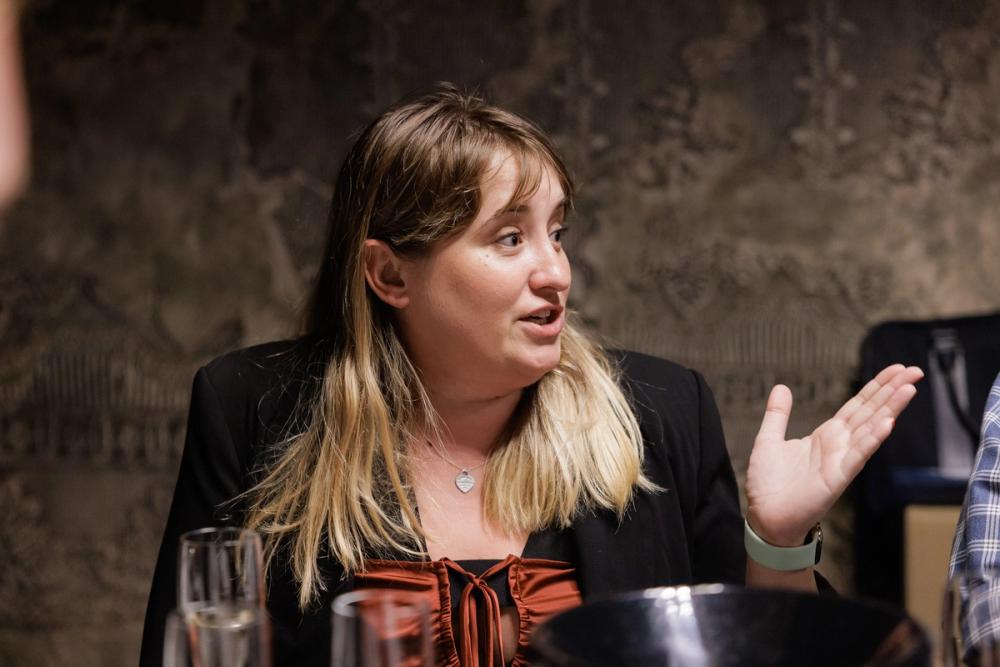
Edyta Yanuzik manages the wine offer at Gaucho Chancery Lane
“In terms of wine trends then sparkling wine and rosé are still the two biggest growth areas. But sustainability and how and where we are sourcing are wines from is also becoming increasingly important,” he added.
“We are looking at sustainable packaging far more and what we can do with bulk wine and packing over here, bearing in mind what impact that might be having on the country you are sourcing wine from.”
The panel agreed the trade needs to do more to promote and introduce more sustainable and alternative packaging, but was not sure which was the right route to take and that customers’ perceptions of boxed wine, for example, was still a hard barrier to cross. But it is slowly changing.
Diaz, for example, believes there is a good future for wine by tap and would like to see more suppliers offer more quality solutions.
But then the panel turned to the breakthrough packaging and innovative devices that were in front of them. Coravin has come a long way from when it was first developed as a way to bring fine wines alive and out of the cellar, but is now arguably relevant for any premium wine sale, be it from a cork or a screwcap.
The final word goes to Gordon Ramsay’s Emanuel Pesqueira: “It has changed the way we see the world as sommeliers. Without it we would not be able to do what we do.”
The Coravin Range

The Coravin Professional range has become a key part of any premium restaurant’s offer
Coravin Timeless Model 3 Pro range
Designed for high-end or rare wines and uses a needle through the cork to access samples of wine and preserve the rest of the bottle for months or even years.
Gives restaurants the chance to offer high-end wines, and slow moving wines by the glass. The Professional Timeless offers 30% more pours as it uses longer argon gas capsules.
Coravin Pivot Pro range
Allows operators to expand their premium BTG offer by preserving opened bottles for up to four weeks. It offers 30% more pours and uses longer argon gas capsules. The Coravin Pivot pours a glass in five to eight seconds.
Coravin Sparkling
* The Coravin Sparkling device uses a specially designed Sparkling Stopper to keep the wine perfectly preserved in the bottle for up to four weeks and can be stored upright or resting horizontally in the fridge.
- To find out more about Coravin go to its trade website here or contact anne.roque@coravin.com.
- Coravin is offering a 30% discount on its Coravin Sparkling device up to October 31. To find out more, register on trade.coravin.com/en-GB or contact anne.roque@coravin.com.










































